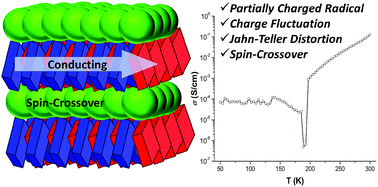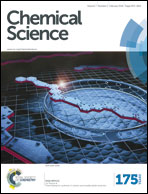A cobalt(ii) spin-crossover compound with partially charged TCNQ radicals and an anomalous conducting behavior†
Abstract
The bifunctional salt [Co(terpy)2](TCNQ)3·CH3CN (terpy = 2,2′;6′,2′′-terpyridine, TCNQ = 7,7,8,8-tetracyanoquino-dimethane) exhibits a high room temperature conductivity of 0.13 S cm−1 and an anomaly in conductivity at ∼190 K as evidenced by variable temperature structural, magnetic and conductivity studies. The anomaly in the conductivity at 190 K has been correlated with the temperature dependent structural breathing and Jahn–Teller distortion of the low spin state of the SCO units, as well as the charge fluctuations and supramolecular π-stacking interactions of partially charged TCNQ radicals. The modular synthetic approach leads to an accessible source of partially charged TCNQ radicals for the facile preparation of bifunctional molecular materials with high electrical conductivity.



 Please wait while we load your content...
Please wait while we load your content...